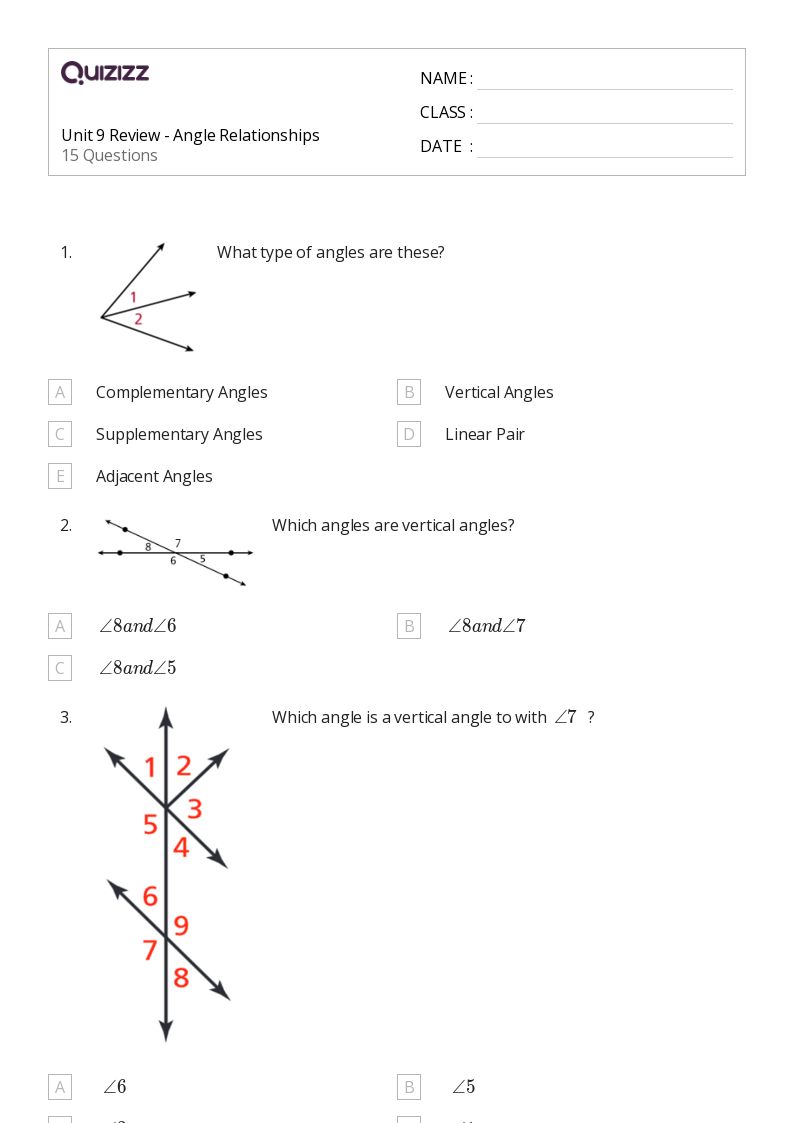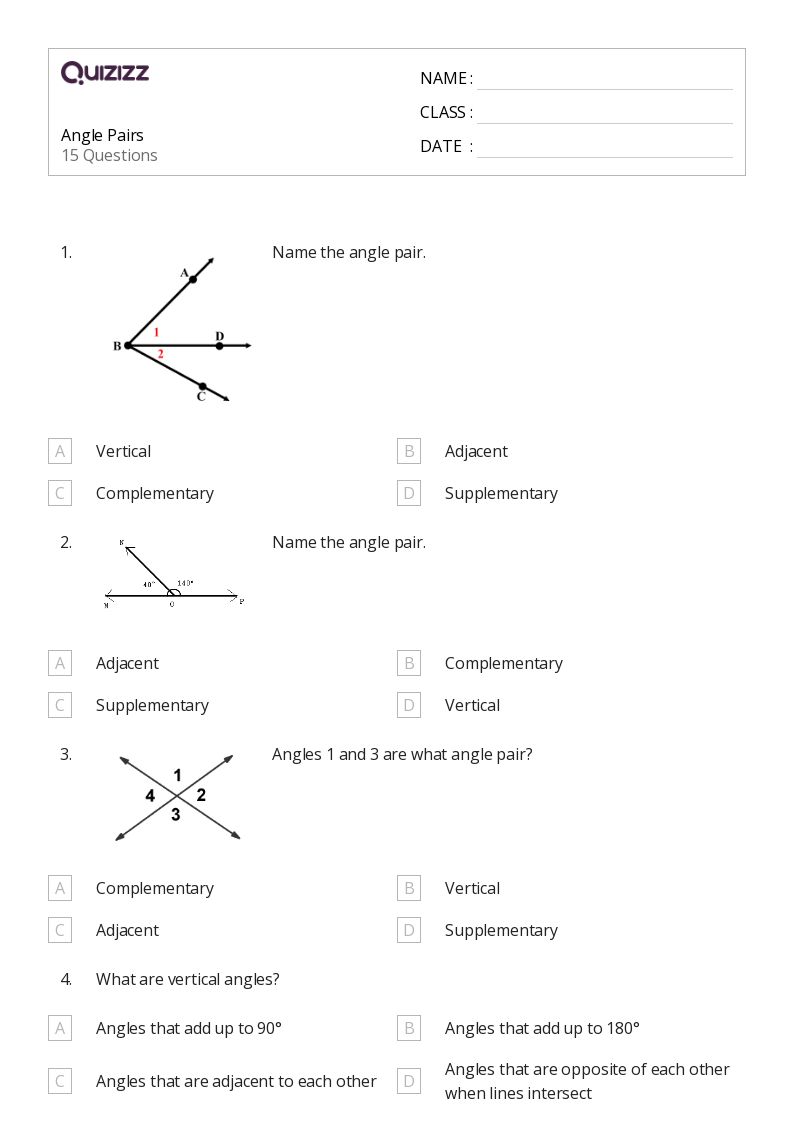
10 Q
7th

25 Q
7th

20 Q
7th

20 Q
7th

10 Q
7th

14 Q
7th - 9th

17 Q
7th

24 Q
7th

15 Q
7th - 8th

10 Q
7th - 8th

15 Q
7th - 9th

20 Q
7th - 8th

10 Q
7th

15 Q
7th

20 Q
7th

20 Q
7th

20 Q
7th

12 Q
7th

12 Q
7th - 8th

14 Q
7th

12 Q
7th

15 Q
7th

20 Q
7th

20 Q
7th
Explore Complementary, Supplementary, Vertical, and Adjacent Angles Worksheets by Grades
Explore Other Subject Worksheets for year 7
Browse resources by Grade
Explore printable Complementary, Supplementary, Vertical, and Adjacent Angles worksheets for 7th Year
Complementary, Supplementary, Vertical, and Adjacent Angles worksheets for Year 7 are essential resources for teachers looking to enhance their students' understanding of these fundamental concepts in Math and Geometry. These worksheets provide a variety of problems and exercises that focus on the relationships between angles, enabling students to develop a strong foundation in this crucial area of Geometry. By incorporating these worksheets into their lesson plans, teachers can effectively engage their students and help them master the skills needed to solve problems involving complementary, supplementary, vertical, and adjacent angles. Furthermore, these Year 7 worksheets can be easily adapted to suit different learning styles and abilities, ensuring that all students have the opportunity to succeed in their Math and Geometry studies.
Quizizz is an excellent platform for teachers to access a wide range of Complementary, Supplementary, Vertical, and Adjacent Angles worksheets for Year 7, as well as other Math and Geometry resources. This interactive platform allows teachers to create engaging quizzes and games that can be used in conjunction with the worksheets to reinforce students' understanding of the concepts. In addition, Quizizz offers a variety of question types, including multiple-choice, fill-in-the-blank, and true or false, which can be tailored to suit the specific needs of each student. By utilizing Quizizz in their classrooms, teachers can not only provide their Year 7 students with valuable practice in working with angles, but also track their progress and identify areas where additional support may be needed.
